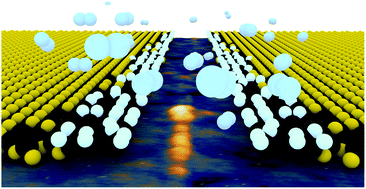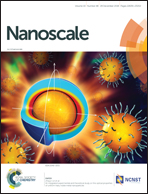Highly active single-layer MoS2 catalysts synthesized by swift heavy ion irradiation†
Abstract
Two-dimensional molybdenum-disulfide (MoS2) catalysts can achieve high catalytic activity for the hydrogen evolution reaction upon appropriate modification of their surface. The intrinsic inertness of the compound's basal planes can be overcome by either increasing the number of catalytically active edge sites or by enhancing the activity of the basal planes via a controlled creation of sulfur vacancies. Here, we report a novel method of activating the MoS2 surface using swift heavy ion irradiation. The creation of nanometer-scale structures by an ion beam, in combination with the partial sulfur depletion of the basal planes, leads to a large increase of the number of low-coordinated Mo atoms, which can form bonds with adsorbing species. This results in a decreased onset potential for hydrogen evolution, as well as in a significant enhancement of the electrochemical current density by over 160% as compared to an identical but non-irradiated MoS2 surface.



 Please wait while we load your content...
Please wait while we load your content...